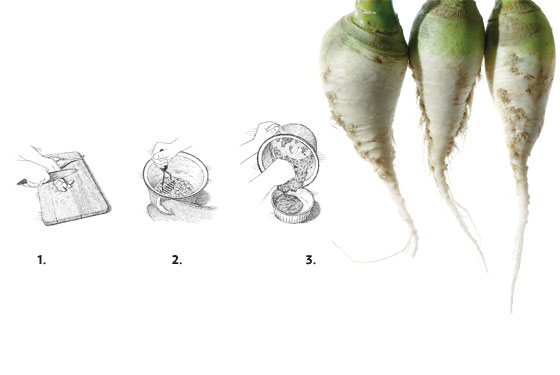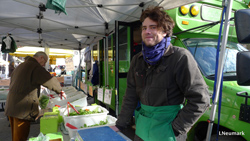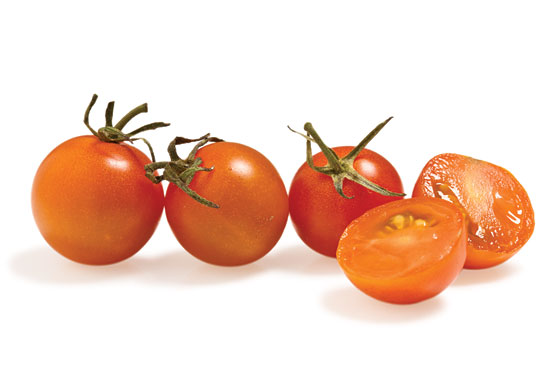 |
(Photo: Hannah Whitaker. Illustrations: John Burgoyne) |
It’s root-vegetable season, and if that doesn’t make you want to clap your hands and jump up and down, the so-called Gilfeather turnip might. Developed by Vermont farmer John Gilfeather in the late 1800s and recently introduced at Greenmarket’s Windfall Farms stand, the heirloom root (which is actually a rutabaga, Gilfeather’s nomenclature notwithstanding) has a sweet flavor with a mild radishlike bite, and it’s not too much to say it’s the best-tasting rutabaga around. Try a few grated raw in a salad, mashed with potatoes, or in this Finnish pudding recipe from Gastronomica editor and rutabaga authority Darra Goldstein, whose passion for the much-maligned veggie might only have been matched by John Gilfeather himself.
Darra Goldstein’s Finnish Rutabaga Pudding
2 1/2 pounds Gilfeather rutabagas
2 eggs
1/2 cup milk
1/2 tsp. salt
1/2 tsp. freshly grated nutmeg
Dash allspice
3 tbs. all-purpose flour
1 tbs. unsalted butter, softened
2 tbs. bread crumbs
Preheat oven to 350. Butter a 1½-quart soufflé dish. Peel and (1) cube the rutabagas, and boil in salted water to cover until soft, 25 to 30 minutes. (2) Drain and mash by hand. Beat in eggs 1 at a time, then add milk, salt, spices, and flour. (3) Turn mixture into soufflé dish. With a fork, mash together the butter and bread crumbs and spread over the top of the rutabaga mixture. Bake, uncovered, for 1 hour, until lightly browned. Serves 6 to 8 (adapted from The Vegetarian Hearth: Recipes and Reflections for the Cold Season, by Darra Goldstein; HarperCollins, 1996).



























.JPG)

(1).JPG)








 Photo: sleepyneko/Flickr
Photo: sleepyneko/Flickr

